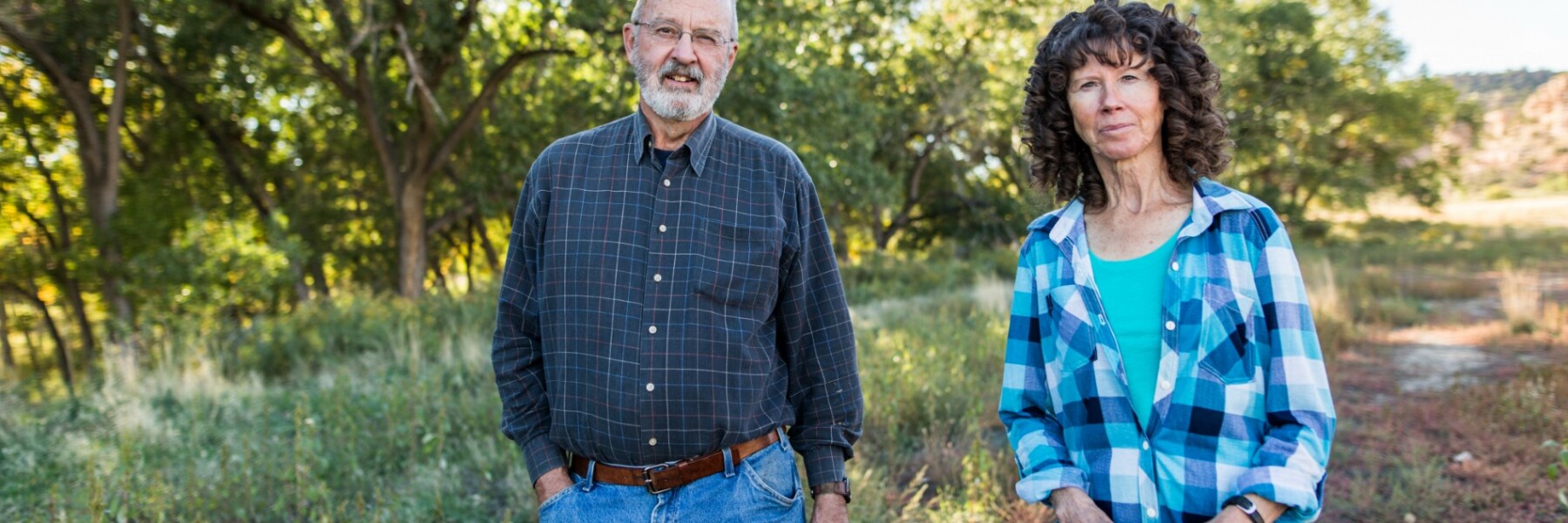In 2000, when Jim Hasenyager and his wife, Charlie, purchased farmland on the Escalante River in Utah, Russian olive and other invasive plant species had already taken over the riverbanks, causing damage to the natural integrity of the ecosystem.
“The river had been narrowing,” Jim explains. “It didn’t flood easily, and it was getting choked with Russian olive and tamarisk (salt cedar). There was no scientific plan on our part (for restoration), we just desired to see the openness of the river.”
Although their original intent was to clean up as much of the river as they could themselves, the project ultimately became far too much for them to handle on their own.
“That was a much bigger project than we ever realized,” Jim explains. “We made a feeble attempt, but life caught up and we weren’t able to do as much work on it as we would have liked.”
The Hasenyagers were approached by the Escalante River Watershed Partnership (ERWP) – which asked the couple to allow them to clear the river.
Most of the local landowners were rather skeptical. “No one would really talk to the ERWP. My wife and I talked about it, and decided we’d be willing to be a demonstration project,” Jim recalls.
Jim believes the local community’s initial lack of interest in the project stemmed from “uncertainty or fear of becoming involved,” he said. “There is a feeling that they want to remain independent from any outside involvement, and manage their land as they see fit.”
Yet, after the neighbors started to see the improvements made by these programs, particularly on Jim’s land after the Russian olive and tamarisk was removed, they gradually started to accept the ideas.
They realized the advantages of working together with a larger team, such as the ERWP, to acquire the funding and labor necessary, which would otherwise be a monumental undertaking.
“It’s such a labor-intensive project, that most private individuals aren’t going to have the means to do it. We would not have had the financial means to hire a crew and keep them employed for several months. I think that is the huge benefit these organizations bring, and a huge impediment to anybody doing it privately,” he says.
Russian olive and tamarisk are non-native invasive species that are considered among the biggest threats to healthy riparian habitat along tributaries of the Colorado River. Tamarisk, for example, consumes large amounts of water, increases soil salinity and overwhelms native plants.
Tamarisk and Russian olive also grows in dense stands that limit access to the river for recreation and agricultural use. Removal of the invasive species allows native plants to re-establish, improving riparian habitat for virtually all western wildlife that depends on river corridors. It also re-establishes natural river processes that support instream habitat and fisheries, improves fishing, boating, and other recreational opportunity.
When work crews began the restoration on the Hasenyager’s property, the river was a jungle of tamarisk and Russian olive.
According to Jim, “It wasn’t walkable. It wasn’t even viewable.”
Yet it only took a few months for the crew to clean up their section of the river, and the results were extremely clear. “Since we started to allow the cutting, the local folks who had seen what was done decided to get on board,” Jim explains. “Now [the community] has a group that hires local fellows to do the cutting as well.”
Although Jim knows that the battle against tamarisk and other invasive species won’t be won too easily, he learned that cooperating with the ERWP and other similar organizations has given him and his wife a fighting chance.
In an effort to spread this idea to the community, Jim says, “They don’t need to fear the projects involving the private money, foundations and the government. It does require the commitment from the landowner to follow up and keep the land clear, though. It’s not something that just can be done and left. There has to be a commitment to keeping the river open. That requires work.”
Jim also looks forward to seeing the results of the hard labor as he moves toward retirement.
When he and Charlie purchased their land, it was the realization of their dream – and they want to do anything they can to take care of the river that runs through it.
“It’s kind of my ‘get-away from work’ retreat,” Jim says cheerfully. “We have an old cabin that was built in the 1860s … that we are reassembling on the farm now. So it’s a place to come and get away from the normal workday life.”




